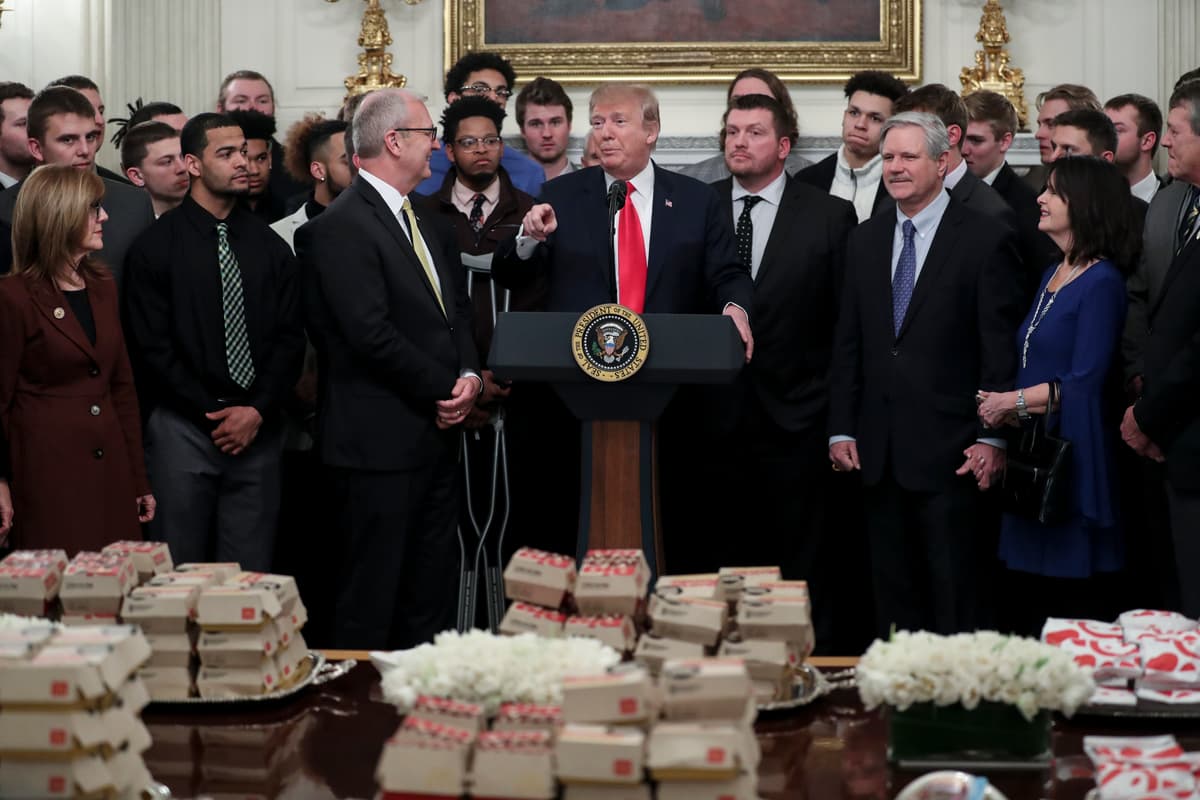Donald McDonald
The 45th president takes a day job at one of the restaurants of the famous hamburger chain — in Pennsylvania.

You’ve met Ronald McDonald, the most famous hamburger helper of all time. Well, meet his brother, so to speak, Donald McDonald. It says in the papers that the 45th president is going to work for a day at a McDonald’s hamburger stand in Pennsylvania. That will put the pickles on Vice President Harris’s oft-stated claim to have, early in her career, worked slinging hamburgers for the home of the Big Mac.
Where’s the beef, you say? The Donald is just playing some ketchup ball. Maybe, but it strikes us as a hilarious way to keep in the headlines the vice president’s posturing about her days at the bottom of the ladder. The fact is that her claim is, given the lack of proof, unconvincing. President Trump, in contrast, will have hundreds of photos of himself behind the counter, maybe chomping one of the Quarter Pounders.
It’s what the consultants like to call “retail politics,” updated for the fast-food era. Trump’s stint at the fryer will serve to underscore the GOP nominee’s strength with working-class voters, which is sounding alarm bells in the Harris campaign. Trump, after all, has “assiduously courted union members and noncollege-educated white voters,” by, the Wall Street Journal reports, focusing on “high costs, manufacturing and the threat of China to the U.S. economy.”
Ms. Harris’s failure to connect with the kinds of voters who work, or eat at, McDonald’s, is prompting a wave of hand-wringing in the liberal press. The ex-president of a United Steelworkers local at West Mifflin, Pennsylvania, Scott Sauritch, tells the New Yorker that “most of the rank-and-file” union members he knows back the 45th president, even if their leaders don’t. “I don’t care what you see on TV,” he said. “The grunts in the lunchroom love Trump.”
Years ago, the New Yorker reports, “America’s steel mills and factories were full of loyal Democrats.” The “union members understood that, in the struggle between labor and capital, Republicans sided with management,” the magazine reports. Now, the New Yorker is startled to find these working men and women have shifted their allegiance, and Ms. Harris’s “support rests disproportionately with affluent, college-educated voters.”
Ms. Harris’s strategy of courting the affluent, the New Yorker observes, might “enable her to win,” but “will raise questions about the Democratic Party’s identity and priorities.” Trump’s shift in a fast-food restaurant, indeed, will be a marker of the extent to which he has put his personal stamp on the GOP, even having the president of the Teamsters Union deliver an address at the party’s nominating convention.
Ms. Harris and her policies, meanwhile, are falling flat with working Americans. That’s partly because she is offering more of the same Democratic policies — high taxes, high regulation, unfair free trade pacts — that have led to the rusting of America’s blue wall. Asked about Ms. Harris’s trouble with these voters, her campaign touts her “plans on issues such as price-gouging and prescription-drug prices that are aimed at these voters.”
In short, she’s calling for more government control and regulatory overreach, the very policies that have stifled growth and limited opportunities for working Americans. Trump seems to grasp that point, and his work turn behind the counter at McDonald’s would only underscore his connection with these voters, incomprehensible though that appeal may be to America’s elites. It could mark a turning point in the election. Would you like fries with that?

